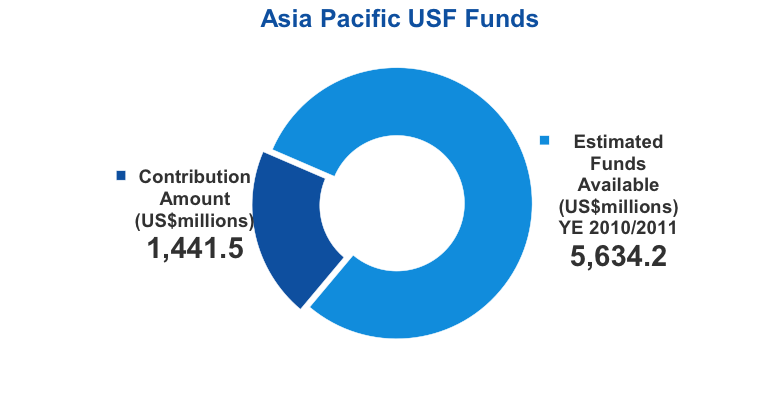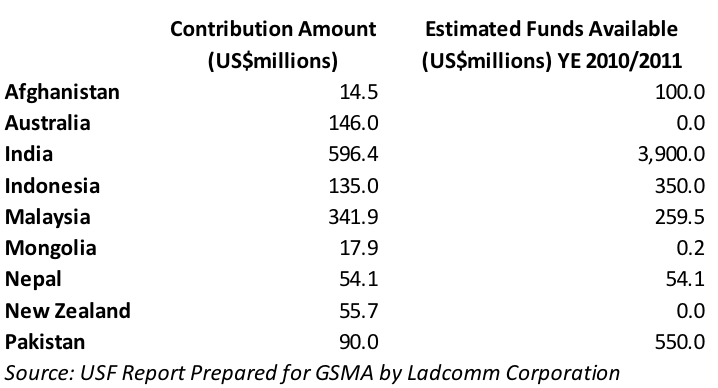A Missing Piece in Asia’s
Wireless Backhaul Industry
Aug
8th, 2013 by
Jose
Del Rosario, NSR
In its recently launched Wireless
Backhaul via Satellite, 7th
Edition report, NSR found the largest
market potential unquestionably lies in
Asia; however, the private sector (i.e.
mobile service providers) have had
difficulty justifying rural area
investments due to narrow margins or
achieving profitable return on
investment (ROI). In essence, although
the market potential is huge for Asia,
ROI considerations have prevented the
potential from being fully realized.
Indeed, the entire satellite industry
has been hampered by ROI in provisioning
wireless backhaul services while
governments have mandated Universal
Service Obligations (USO) in order to
bridge the ever widening digital divide.
Basically, governments want to
equalize telecom services in rural and
urban areas, while the private sector
wants to profit from the government
initiative. Somehow there is
something missing in the equation.


Universal Service Funds (USF) may be
the answer. Indeed, the case of
Australia where the government issued a
request for proposal for a satellite
broadband program, could serve as an
example of how to best serve large
geographic areas, in particular those
not reached and likely will not be
reached by terrestrial technologies. NBN
Co Limited is the company established by
the government to design, build and
operate NBN, which will roll out the
network and sell wholesale capacity at a
uniform price to service providers, who
in turn, will offer retail services to
end users. The model is envisioned to be
applied for fixed broadband access, but
it could easily be applied to wireless
backhaul services as well.
However, a recent report released by
the GSMA found that most USF remain
inefficient and ineffective. Of those
funds studied, many have not disbursed
any money (such as India, which has
accumulated $3.9 billion in unused
funds). In total, Asia has over
$5.6 billion in USF funds that are idle.
Australia (and New Zealand) noticeably
had $0 unused funds.
The problem is basically legal and
administrative rather than technological
or having much to do with basic ROI
metrics. The GSMA report found that the
underlying legal framework for many
funds were not well conceived from the
outset (e.g., not technology-neutral or
service-flexible, excessively
bureaucratic, insufficient oversight,
inadequate or ambiguous authorization to
manage the Fund) as well as
poorly-conceived legal frameworks.

In NSR’s report, the Asian market is
forecast to reach close to $500 million
by 2022 using a mix of technologies and
solutions, notably a shift from
traditional FSS to next-generation
systems such as HTS and MEO-HTS (O3b)
that offer better ROI. Indeed, the
entire forecast was based purely on a
sustainable ROI model where NSR believes
that private initiatives rather than
government programs will drive growth.
Yet, it is certainly worth taking a
close look at USF given that the Asian
market for 2012 based on NSR’s research
stood at a little over $200 million or
3.5% of the estimated funds available
via USF. India of course
influences the market significantly, but
taking out India’s $3.9 billion idle
funds still leaves more than $1.7
billion of unused USF. NSR’s 2012
estimated wireless backhaul satcom
market for Asia translates to just 11.5%
of the unused $1.7 billion USF.
Bottom Line
There is a large disconnect among
ROI, USO and USF considerations. For
USF, the problem primarily lies in
administrative and legal frameworks.
Governments of course need to resolve
these issues internally, and the
transparency laid out by the GSMA is a
step in the right direction in getting
the problem resolved.
On the satellite industry’s side, it
is already coming up with innovative and
cost-effective solutions to address ROI
considerations. However, it needs to do
more in terms of getting USF to be spent
on their technologies and services in
order to fulfil the large market
potential in the Asian region and other
key regions of the globe, notably Africa
and Latin America.
NSR does not have the answer in
addressing government inefficiency and
how the satellite industry can correct
this. However, it does see opportunities
on two fronts:
-
Funding: Governments are
beginning to dedicate funds for
broadband access services, which
could provide satellite service
providers with cost advantages over
terrestrial solutions and thus
enlarge the satellite market base;
-
Partnerships:
-
Satellite providers could
partner with wireless, wireline
or fixed wireless carriers to
develop a comprehensive
broadband service towards
fulfilling USO obligations;
-
Satellite providers can partner
with governments in establishing
entities ala-NBN Co for
provisioning broadband and
mobile access to remote and
underserved areas.
|